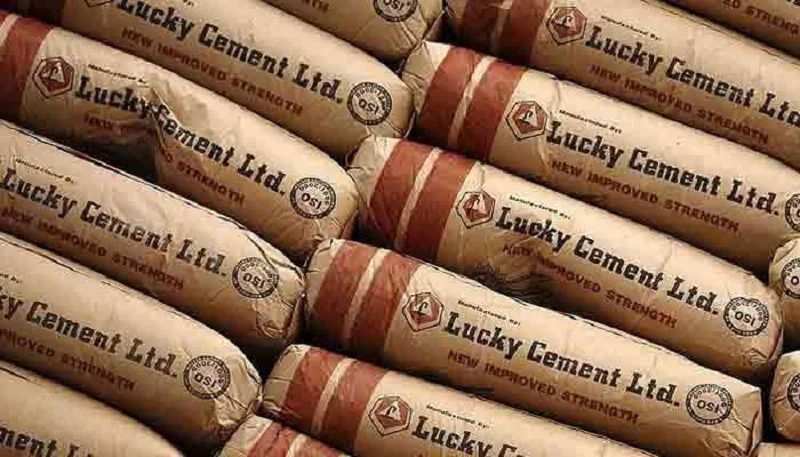On a consolidated basis, Lucky Cement Limited reported its highest-ever profit after tax of Rs36.42 billion for the year ended June 30, 2022.
This shows earnings per share of Rs91.22 as compared to Rs70.69 per share reported the last year, representing a growth of 29 per cent.
Lucky Cement achieved a 60 per cent higher net turnover of Rs331.5 billion as compared to last year’s turnover of Rs207.2 billion.
The consolidated net profit remained Rs36.4 billion out of which Rs29.5 billion was attributable to the owners of the holding company, compared to Rs28.2 billion and Rs22.9 billion, respectively for the prior year.
The exceptional growth in revenue, despite economic challenges, is owing to robust performance across all businesses of the group and is an affirmation of the successful execution of its diversification strategy.
On a standalone basis, Lucky Cement’s overall sales volumes declined by 8.9 per cent to reach 9.1 million tons during the year ended June 30, 2022, in comparison to 10 million tons last year.
Local sales volume dropped by 3.6 per cent to reach 7.3 million tons in the current year compared to 7.6 million tons last year.
READ THIS
Pakistani company to seek FO ‘guidance’ for exports to India
Govt mulling tax to improve capacity utilization in cement sector
While the export sales volume declined substantially by 25 per cent to 1.8 million tons during the year compared to 2.4 million tons during last year due to non-viability in terms of pricing on the back of persistent high coal prices in the international market coupled with increased shipping freights.
Despite the reduction in volumes in both domestic and export sales, the profitability of the local cement operations improved marginally because of enhanced operational efficiencies, including better management of sales and distribution costs, which decreased as a percentage of sales.
Lucky Cement achieved a major milestone when its wholly owned subsidiary, Lucky Electric Power Company Limited (LEPCL), achieved the Commercial Operations Date (COD) on March 21, 2022, of the 660 megawatts coal-fired power plant set up at Port Bin Qasim, Karachi.
This milestone will play a key role in increasing the energy security and prosperity of Pakistan. It will also go on to reduce the cost of electricity and reliance on imported fuel in the long run after the completion of Phase III of SECMC in June 2023.
The power generated from the plant is being fed into the national grid in line with a power purchase agreement signed with the Government of Pakistan.
In another major development, the company’s subsidiary, Lucky Motor Corporation started assembling Samsung mobile phones in Pakistan in December 2021.
Lucky Cement remains committed to making a real contribution to society and the communities in which it operates.
Lucky Cement also extended its merit-based support to deserving and less privileged students in Pakistan and abroad and also continued to donate generously towards health-based initiatives by supporting various welfare organizations.
In support of the UN Sustainability Development Goals, the Company has initiated and promoted various sustainable projects to support the United Nations’ 2030 Agenda.
Regarding the future outlook, Lucky Cement has reported that it expects the fiscal year 2023 to be challenging for Pakistan’s economy, especially due to the high current account deficit, which stood at $17.4 billion for FY2022 versus $2.8 billion for FY2021.
The commodity super cycle, which started last year post-pandemic, continues to persist. This has been further aggravated by the ongoing Russia-Ukraine conflict resulting in continuous volatility in commodity prices particularly coal, petroleum products and packaging material, which has significantly increased the cost of production for cement.
A similar trend has been witnessed in other construction materials as well, mainly steel which has resulted in a hike in overall construction costs.
On the local front, rising interest rates coupled with higher inflation have severely affected the purchasing power which will impact the cement demand in the short term.


